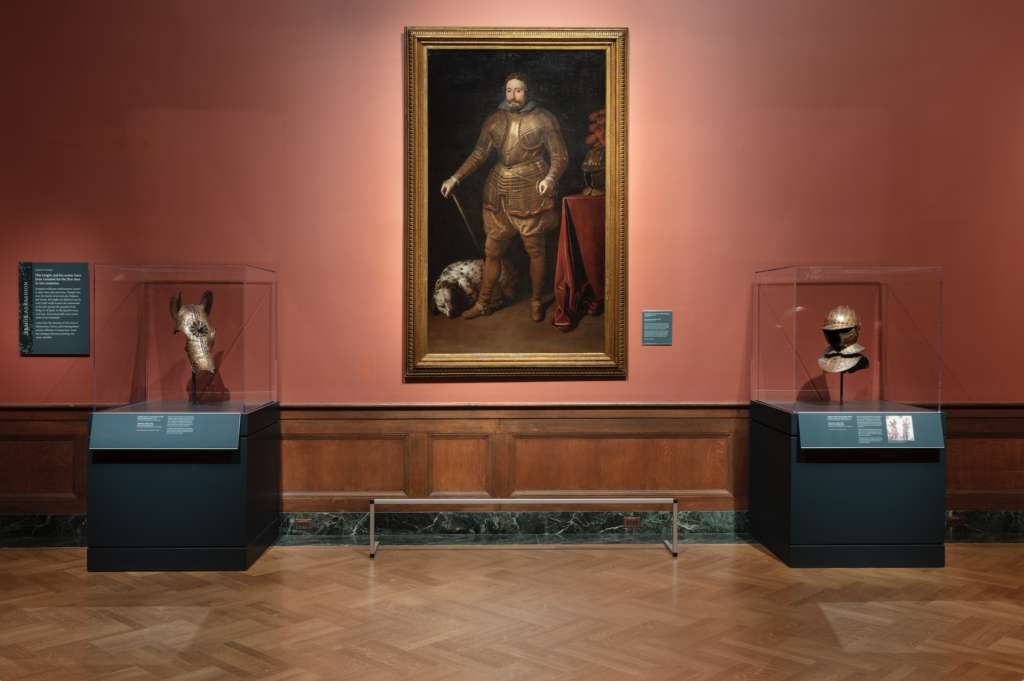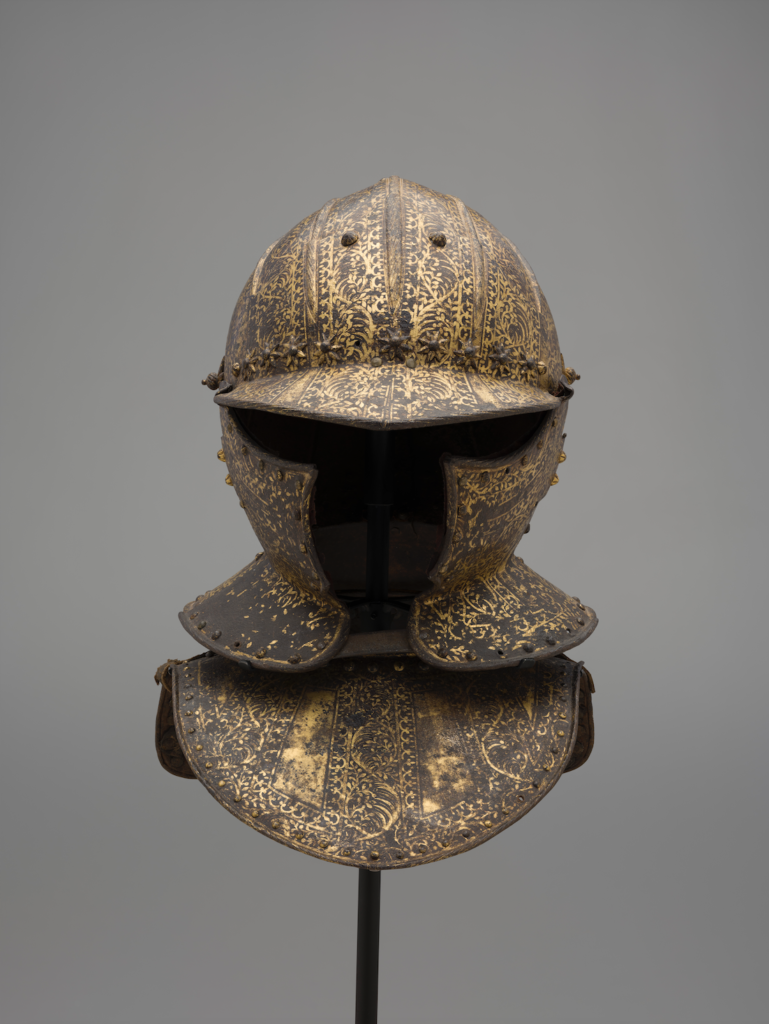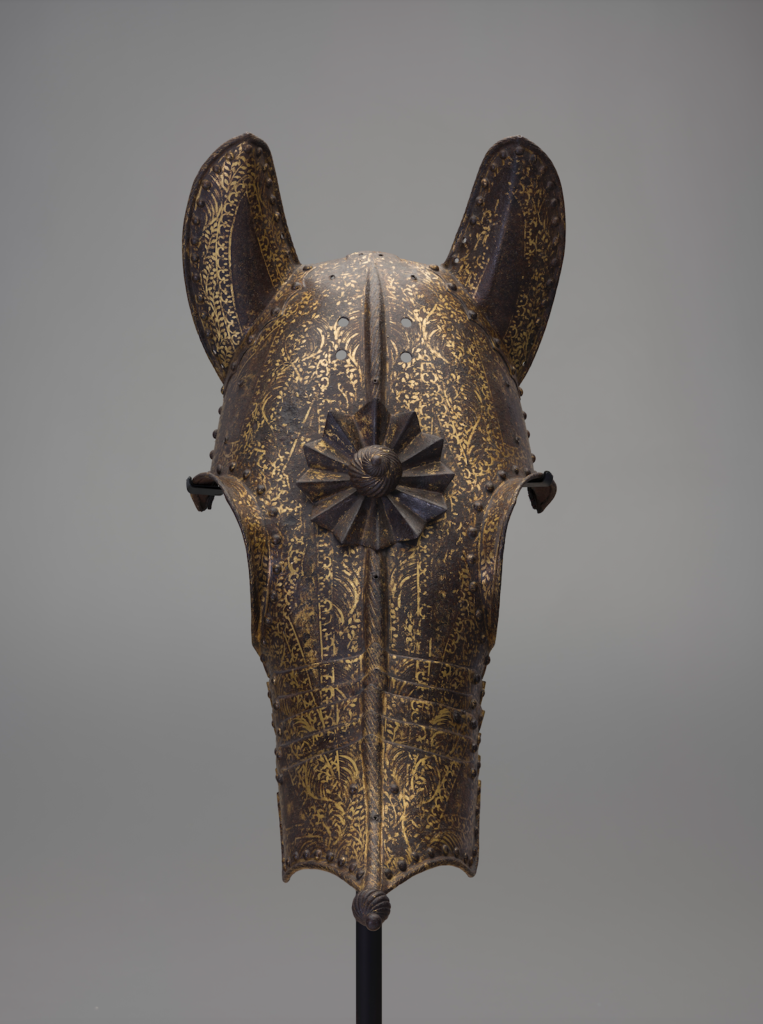Evocative doesn’t even begin to describe the latest exhibition at the Detroit Institute of Arts. For the first time in over two hundred years, a set of baroque-era armor is on view to the public alongside Juan van der Hamen y Léon’s portrait of Jean de Croÿ wearing it. De Croÿ was a knight and a member of the Order of the Golden Fleece. He later became the captain of the Guardia de los Archeros, an elite group of noblemen of Flemish origins who served as bodyguards to the King of Spain. His suit of armor would have been a powerful signifier of his status and position in society.

The DIA has been expanding its collection in early modern Iberian art, acquiring some exceptional Spanish works in the past fifteen years. The museum has one of the most significant collections of sixteenth- and seventeenth-century Spanish art in North America.The de Croÿ painting by Hamen y Léon is a loan from a distinguished private collection in Spain and is displayed near Portrait of a noblewoman by Rodrigo De Villandrando, from the Institute’s permanent collection. This portrait features the subject wearing a red ensemble with deliciously evocative gold couched embroidery which bears a striking resemblance to the gold leaf designs on the de Croÿ armour. If couture houses today wished to present a collection representing baroque themes, these works would not look out of place on the runway together.
With a background in metallurgy, the Guests of Honor curator, Chassica Kirchhoff, was perfectly suited (pun intended) to take on the role of bringing these pieces of armor together, through a deep understanding of how each suit was made. With sinuous contours reminiscent of leather (in keeping with the visual culture of the time), the de Croÿ steel armor has been forged to the lines of the wearer’s body, making it quite literally a piece of bespoke couture fashion. Believed to have been made around 1624, the armor is presented in the same condition today as it was the day it was created. This was made possible by subjecting the pieces (at the time of their creation) to a chemical bath, causing the steel to develop a micro-oxide layer, russeting the surface and protecting the gold and steel underneath. Thankfully for the conservators today, the armor requires very little maintenance.


The Jean de Croÿ suit of armor represents the status and power of the wearer, and it was created for that very purpose. It echoes the silhouettes of the time – a piece of fashion history in the truest sense. A suit of armor was the most expensive thing that a nobleman would own besides woven tapestries. What better way to display one’s power and wealth than an expandable suit of gilded steel that you didn’t have to take off even after a hearty meal – Jean de Croÿ was seemingly the only one with a suit that allowed him to expand or contract the armor for comfort. This unusual feature would have required a great deal of craftsmanship on the armorer’s part, accentuating the exclusive and expensive nature of the ensemble.
Fantastic sculpture and frescoes are the more popular examples of baroque art on display at many institutions, so the mind doesn’t necessarily think of armor to be representative of baroque style. While steel armor was an expensive commodity to own at the time, gilded armor was even more decadent. The de Croÿ ensemble is an example of “luxury armor” as a status symbol which would have surely been the envy of many a knight during that time period.
Kirchoff’s goal is to highlight more wearable works of art at the DIA, and to invite the public into the museum’s study of history through fashion. A bespoke suit of armor echoes such intimate specificity with regards to its wearer – it is, in many ways, a detailed narration of his story. It is certainly worth making the journey to meet Jean de Croÿ, if not in person but through something that comes very close.
Guests of Honor: Armor as Fashion. The Detroit Institute of Art, Michigan. April 25, 2025 to April 26, 2026. dia.org.

